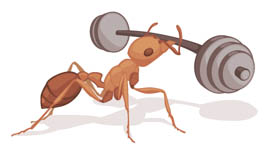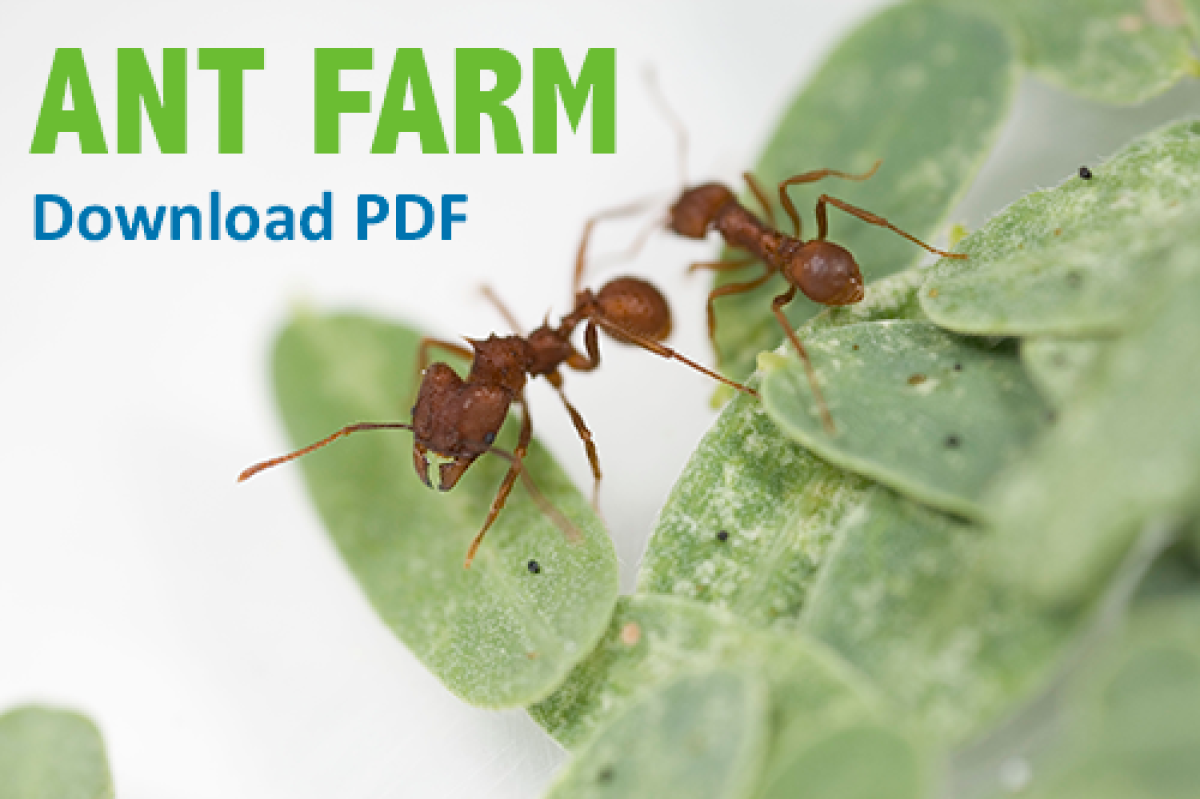Ant Factoids
We have collected a few facts about ants that you might find interesting. More are still to come.
How much weight can an ant carry?

According to different estimates, ants can carry 10 - 50 times their body weight, or maybe even more! How? Because ants are so small, their muscles have a greater cross-sectional area (they are thicker) relative to their body size than in larger animals. This means they can produce more force pound-for-pound (or in the case of an ant, milligram-for-milligram).
Ant bodies are built to withstand a lot more force if they need to, though. Studies estimate that their joints (or places their different body parts connect) can experience forces of more than 3,000 times their own body weight without breaking.
How many types of ant are there in the world?
Scientists have described over 12,000 ant species. Many more have yet to be discovered, especially in the tropics. The total weight of all ants on Earth is close to that of humans. That’s pretty impressive considering the average ant is about one-millionth the size of a human being!
Does the queen control the colony?
No. Despite her size and royal title, the queen doesn't boss the workers around. Instead, workers decide which tasks to perform based on personal preferences, interactions with nestmates, and cues from the environment. The colony exhibits a division of labor where different individuals specialize on different jobs. Younger ants often work inside the nest, taking care of the queen and her brood. Older workers are more likely to go outside to gather food or defend the nest against enemies.
How do ants communicate?
Ants communicate mainly using chemicals, which they sense with their antennae. They release pheromones with specific messages, such as "Follow me to food!" or “Attack the intruder!”. In addition, nestmates recognize one another by chemicals on their bodies. The queen is coated with a unique blend of chemicals that advertises her presence. Ants can also use touch and vibration to communicate.
Are all ants pests?
No. Ants serve many roles in nature, some of which are beneficial to humans. They eat other insects, pollinate plants, disperse seeds, move soil, and circulate nutrients. Because ants perform all these functions, they are a key component of many ecosystems.
Which hurts worse, an ant’s bite or its sting?
Usually its sting. The bite of most ants (except for really big ones) feels like a weak pinch. But even tiny ants can deliver venom through their stings, resulting in burning, itching, and/or swelling. Hence, names like fire ant and bullet ant. Remember though that many ants don’t have stings and are more or less harmless to humans.
Read more about: Face to Face with Ants
Bibliographic details:
- Article: Ant Factoids
- Author(s): Dr. Biology
- Publisher: Arizona State University School of Life Sciences Ask A Biologist
- Site name: ASU - Ask A Biologist
- Date published: 22 Sep, 2009
- Date accessed:
- Link: https://askabiologist.asu.edu/content/ant-factoids
APA Style
Dr. Biology. (Tue, 09/22/2009 - 16:22). Ant Factoids. ASU - Ask A Biologist. Retrieved from https://askabiologist.asu.edu/content/ant-factoids
Chicago Manual of Style
Dr. Biology. "Ant Factoids". ASU - Ask A Biologist. 22 Sep 2009. https://askabiologist.asu.edu/content/ant-factoids
Dr. Biology. "Ant Factoids". ASU - Ask A Biologist. 22 Sep 2009. ASU - Ask A Biologist, Web. https://askabiologist.asu.edu/content/ant-factoids
MLA 2017 Style
Be Part of
Ask A Biologist
By volunteering, or simply sending us feedback on the site. Scientists, teachers, writers, illustrators, and translators are all important to the program. If you are interested in helping with the website we have a Volunteers page to get the process started.


